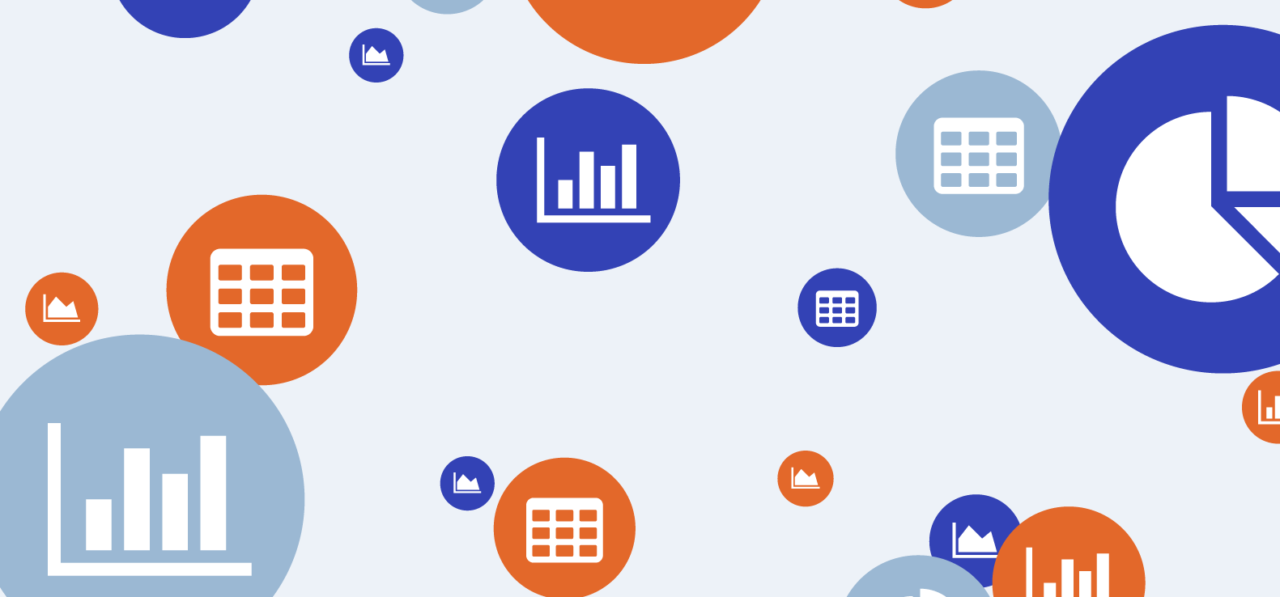What Is Metadata? Types and Frameworks

By Aaron Bradshaw
Published on 2024年10月1日

Metadata is "data about data." It provides information about data to make tracking changes and working with data assets easier. Examples of metadata include top users and creation date.
Metadata has existed for almost 60 years. MIT’s Stuart McIntosh and David Griffel first used the term in 1967, describing the need for a digital “meta language.” Since its inception, metadata has evolved and become more confusing, while also growing more important and valuable.
Ever since Gartner released their Metadata Management Quadrant and Active Metadata guide, people have responded well to the idea that metadata shouldn’t just be collected but also used to enhance processes:
But using metadata to enhance processes is just part of the puzzle. In this blog, we’ll review key metadata types, detail why they are important, share how to tie them together, and reveal how to turn them from static documentation into live content.
Key metadata types, examples, and users
The most popular types of metadata and their user groups include:
Business metadata
This type of metadata provides the meaning of key data concepts, with definitions in common language, without regard to technical implementation. Examples include Business Glossary terms, business data definitions (Data Elements), and metric/KPI calculation logic.
By aligning on the definitions of key terms like "customer" in a Business Glossary, businesses can ensure all teams are speaking the same language.
Key users of business metadata include business analysts, business SMEs, operational teams, business data stewards, and business data owners. These people would use business metadata to discover an acronym, synonym, or meaning of a term. They may also use business metadata to understand a natural language calculation logic for a metric or KPI.
Technical metadata
Provides information on the format and structure of the data as needed by computer systems. Some examples include information about physical database tables or lineage, such as the number of columns in a database table or dates of data transformation activity in lineage.
Key users of technical metadata include data analysts, data scientists, and data engineers. These groups may leverage technical metadata to find available data to deliver insights or understand where a data pipeline originated.
For example, a data analyst may use technical metadata to find a table, understand any common joins, filters, and any context such as the length of time historical data has been stored, to enhance their knowledge of that table.
Compliance metadata
Compliance metadata provides information related to any regulatory or organizational compliance initiatives related to data. Examples include information about external regulations such as GDPR and internal policies such as a Data Access Policy. Because certain types of data (such as personally identifiable information, or PII) are pursuant to such regulations which mandate how that data can be processed and stored, compliance metadata is an important tool for data analysts and others to stay compliant.
Key users include Privacy Officers, Compliance Officers, data governance managers, and data analysts. A common use case involving compliance metadata is finding all data policies and understanding their impact on users.
A common use case involving compliance metadata is tagging all PII data and linking it to respective regulations, such as the GDPR, CCPA, or CPRA, so users are aware when they are managing this data pursuant to regulations and thus analyze it compliantly.
Operational metadata
This metadata type provides information related to events and processes that occur and the impacted data. Examples include table volume details, last update timestamps, and partition information.
Key users include data engineers, data analysts, data scientists and the operational team. Common usage includes checking last update dates (and times) for tables, and checking the last number of rows added to a table. It can also include checking the last time a process or procedure document was updated.
The main purpose of this is to understand any potential limitations, breaches of SLAs (did a file get loaded in time), any specific partitioning etc, to be able to utilize data correctly from an analysis and technical approach.
The value of combining metadata types in a data catalog
One of the huge shifts in cataloging has been the housing for all of these metadata types in one solution. As a result, the power of an organization's metadata has exploded.
Linking business metadata to technical metadata can reduce the gap between data and technology teams. Data engineers and BI developers can utilize calculation logic defined by business SMEs to create reports with unambiguous calculations. Compliance teams no longer need to manually and painfully try to ensure policies are controlled on the right data as volumes grow exponentially, as the policies can be directly linked. Operational metadata tied to technical metadata enhances a data engineer’s ability to monitor and observe trends and proactively alert others to any potential issues with a process.
Activating (operationalizing) your metadata
Active metadata is data that is automatically generated and updated as data is used, modified, or ingested. Active metadata can be used to manage data within a system, track changes, and ensure data quality.
In contrast to passive or traditional metadata, active metadata offers value because it reveals key details about data usage (such as asset popularity) while requiring minimal oversight, as it is automatically generated. Historically, metadata details lived in the data catalog alone, restricting their impact. Yet few outside of the core data team frequent the catalog, perpetuating a broken system of data “haves” and “have nots.”
With the rise of active metadata, we can make all high-value metadata available where people truly spend their time. In this way, we can empower people with the information they need by making all metadata consumable where it can have the most significant impact.
Here’s an example to illustrate the value of active metadata. Part of my job is to consume analytics reports. However, due to time constraints, I'm unlikely to verify all the information in that report (by looking up definitions within the report in the data catalog, or investigating suspected quality issues for data used in the report, for example). Yet such details would be helpful to gauge that report's accuracy and trustworthiness. How might active metadata address such issues and build trust for consumers?
By displaying definitions and data quality alerts on the dashboard itself, people get the information they need to consume and use this data with confidence while sparing them the nuisance of having to jump between tools to answer these basic questions.
This can be done across countless tools in numerous ways to solve pain points for your teams.
Common metadata standards in business: Common Warehouse Model (CWM) and Data Catalog Vocabulary (DCAT)
Metadata standards ensure consistency, interoperability, and clarity when managing data across systems and organizations. Two key metadata standards, the Common Warehouse Model (CWM) by the Object Management Group (OMG) and the Data Catalog Vocabulary (DCAT), offer structured frameworks for effective data management.
Common Warehouse Model (CWM)
This a comprehensive metadata standard created by the Object Management Group (OMG) to facilitate data warehousing. It provides a common framework for describing data sources, the transformation processes they undergo, and how data is stored within a data warehouse. The CWM allows organizations to represent and share the structure and semantics of their data across platforms, ensuring that data remains consistent, reliable, and reusable.
Key benefits of the CWM:
Supports data integration from various sources, enabling the creation of a unified data warehouse.
Facilitates interoperability between different tools, systems, and platforms.
Provides a standardized approach to modeling data warehouses, ensuring consistency in data management practices.
Data Catalog Vocabulary (DCAT)
The Data Catalog Vocabulary (DCAT) is a W3C standard designed to support the discovery and interoperability of data across the web, particularly for government and open data initiatives. DCAT provides a standard way to describe datasets and catalogs, enabling seamless data sharing and discovery between organizations, agencies, and platforms. By using DCAT, organizations can make their data more discoverable, improving accessibility and fostering better data governance.
Key benefits of the DCAT:
Ensures semantic consistency across data catalogs, making it easier to understand and share data assets.
Supports linked data principles, enabling the connection of data across different domains and datasets.
Helps organizations create searchable, comprehensive metadata for datasets, improving data accessibility.
By leveraging these metadata standards, organizations can enhance their data management practices, ensuring that their metadata is both structured and interoperable across different platforms.
Metadata in cloud computing: Ensuring data accessibility and scalability
As organizations increasingly move to the cloud, metadata plays a pivotal role in ensuring seamless data accessibility and scalability. In cloud environments, where data is distributed across multiple servers and locations, metadata is the connective tissue; it helps track the location, ownership, and status of data, making it easier to retrieve and manage, no matter where it's stored.
With the ability to scale up and down quickly in the cloud, metadata enables businesses to handle massive volumes of data while maintaining performance. By tagging data with relevant metadata—such as file size, format, and access permissions—organizations can optimize storage and streamline access, ensuring that the right data is available to the right people at the right time. As businesses grow, metadata ensures that cloud infrastructures remain agile, adaptable, and efficient.
Metadata for machine learning and AI: Boosting automation
In the world of machine learning and AI, metadata is a game-changer for boosting automation and efficiency. Metadata helps organize and label the vast datasets needed to train machine learning models, providing critical context such as source, structure, and usage history. This context ensures that AI algorithms can quickly access and process the most relevant data, improving the accuracy and speed of model development.
By leveraging metadata, businesses can automate many data management tasks, from cleaning and organizing datasets to selecting features for machine learning models. For example, metadata can help AI systems identify patterns, track data provenance, and even recommend the best models for specific tasks. The result? Faster AI innovation, reduced manual intervention, and more accurate insights that drive business success. Metadata is the key to unlocking the full potential of AI by providing the structure and context needed to fuel intelligent, purpose-built automation.
Conclusion
As we’ve seen here, consolidating and centralizing different types of metadata can be hugely beneficial. To make your metadata impactful, follow these tips:
Tip #1: Link different metadata types together—Link your business metadata to compliance and technical metadata, and link technical metadata to compliance and operational metadata to empower people to self-serve while streamlining multiple processes.
Tip 2: Ask consumers where they spend their day—Which communication tools do they favor? Which BI tools are in rotation? Where do data teams query data?
Tip 3: Make your metadata available in the most popular tools - Show definitions of tables and any data issues in your SQL querying tool, enable the discovery of your metadata in Teams & Slack, and show definitions and any issues on report pages, where those details are most useful.
Curious to see how Alation can help you manage metadata more effectively? Book a demo to learn more.
- Key metadata types, examples, and users
- The value of combining metadata types in a data catalog
- Activating (operationalizing) your metadata
- Common metadata standards in business: Common Warehouse Model (CWM) and Data Catalog Vocabulary (DCAT)
- Metadata in cloud computing: Ensuring data accessibility and scalability
- Metadata for machine learning and AI: Boosting automation








